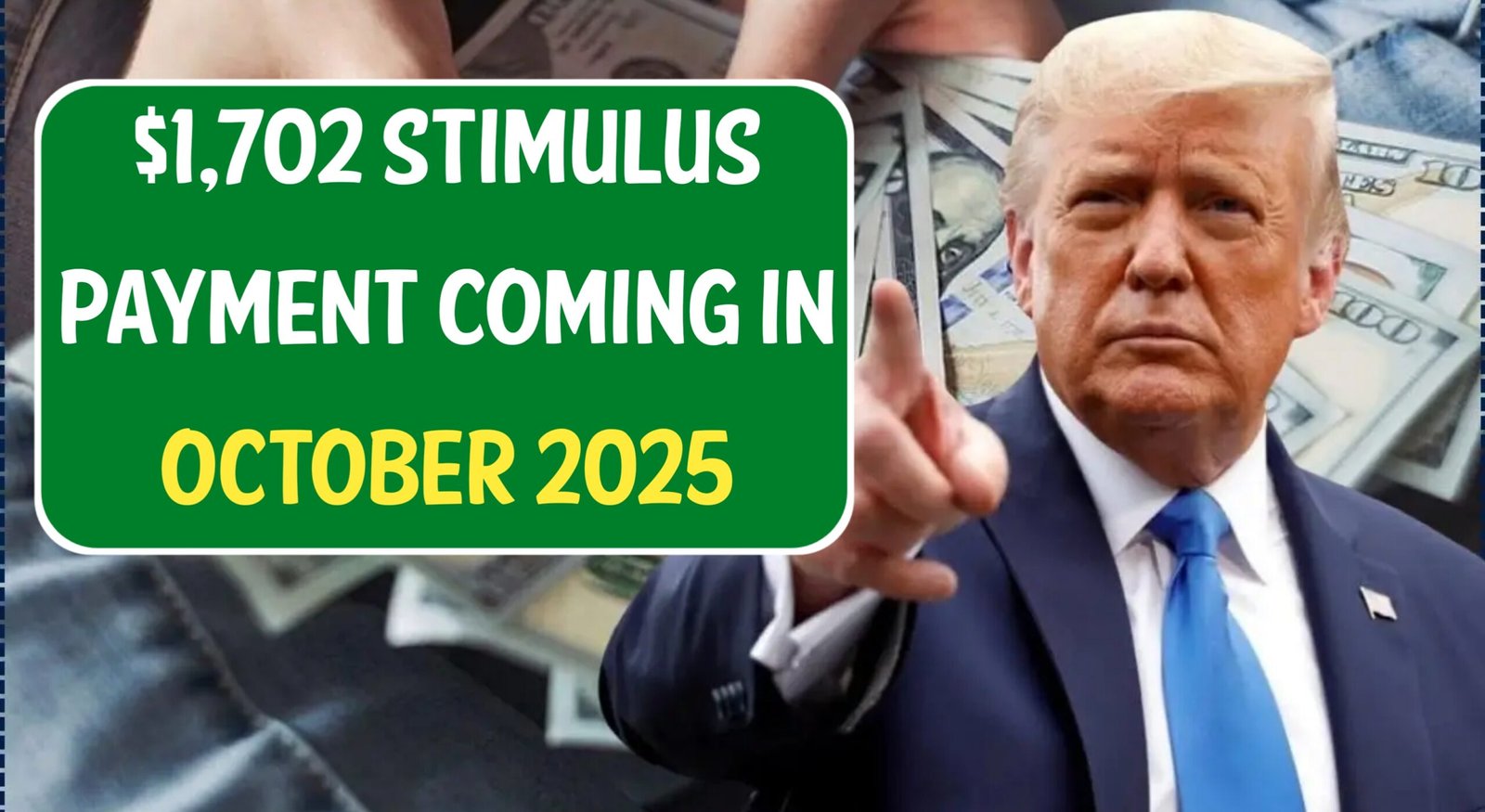The U.S. government is set to release a $1,702 stimulus payment to eligible seniors this October 2025. This payment is part of ongoing efforts to support Americans during challenging economic times, ensuring seniors have extra financial support to cover essential expenses such as healthcare, groceries, and utilities. If you are a senior citizen in the United States, it is important to understand the eligibility, payment schedule, and how to receive your stimulus funds.
Who Qualifies
The stimulus payment is targeted specifically at seniors, primarily those receiving Social Security benefits, Supplemental Security Income (SSI), and Railroad Retirement benefits. Eligible recipients must meet age and income criteria, and their financial information should already be on record with the relevant federal agencies.
Key eligibility criteria include:
- Age 62 or older (depending on the program)
- U.S. citizenship or permanent residency
- Income limits set by the IRS (usually under $80,000 for individuals, $160,000 for joint filers)
- No recent changes that disqualify them, such as new taxable income over the threshold
Understanding these requirements is crucial, as not everyone who receives Social Security automatically qualifies for the full $1,702.
How the Payment is Calculated
The $1,702 stimulus amount is a fixed payment for most seniors, but it can vary depending on prior income or existing benefits. The government considers adjusted gross income (AGI) reported on tax returns or current benefit amounts from Social Security to calculate the payment.
Seniors receiving automatic payments via direct deposit will see no delay. Those who need paper checks or prepaid cards may experience longer processing times. The IRS and Social Security Administration (SSA) coordinate to ensure payments reach the correct recipients efficiently.
Payment Schedule
The October 2025 payment is being rolled out in multiple waves to prevent system overload and ensure smooth delivery. Seniors should check their status in advance to anticipate the exact payment date.
- Week 1 (October 6–10): Direct deposit payments for Social Security recipients
- Week 2 (October 13–17): SSI beneficiaries receive direct deposit
- Week 3 (October 20–24): Paper checks start mailing for seniors who do not have direct deposit
- Week 4 (October 27–31): Prepaid debit cards and remaining paper checks sent
It is recommended that seniors verify their bank accounts and mailing addresses to avoid delays.
Direct Deposit vs. Paper Checks
Direct deposit is the fastest and safest method for receiving stimulus payments. Seniors who already receive their benefits via direct deposit will automatically get the $1,702.
For those without direct deposit, the government will issue paper checks or prepaid debit cards. Paper checks can take 2–3 weeks to arrive after processing begins. Seniors should monitor their mail closely during the last two weeks of October to ensure they receive their payment.
Checking Payment Status
Seniors can check the status of their stimulus payment using official government portals, such as the IRS “Get My Payment” tool. Users need:
- Social Security Number (SSN)
- Date of birth
- Current mailing address
The tool provides real-time updates, including whether the payment has been processed, mailed, or deposited. It is strongly advised not to rely on third-party websites, as they may be scams.
Common Questions Seniors Have
Q: Do I need to file taxes to get this payment?
A: Not necessarily. Seniors who receive Social Security or SSI usually do not need to file a tax return to receive the stimulus payment.
Q: Can I get the payment if I moved recently?
A: Yes, but make sure your address is updated with the SSA or IRS to prevent delays in receiving paper checks.
Q: Is this payment taxable?
A: No, the $1,702 stimulus payment is not considered taxable income for federal taxes.
Using the Stimulus Payment Wisely
For seniors, the stimulus payment can cover various essential needs. Common uses include:
- Paying for medications or medical bills
- Covering groceries and household essentials
- Utility bills such as electricity, water, and heating
- Transportation costs or car maintenance
Financial advisors also recommend setting aside a portion for emergencies, as economic conditions may continue to fluctuate.
Impact on Seniors
The stimulus payment is expected to have a significant impact on seniors, especially those living on fixed incomes. Analysts estimate that the $1,702 will help boost household spending and financial stability.
For many seniors, these payments are not just about covering immediate costs—they also offer a sense of security and peace of mind, knowing they have extra support during the fall and winter months.
How to Avoid Scams
Unfortunately, stimulus payments often attract scams targeting seniors. To stay safe:
- Never share your Social Security number or bank account information via email or phone
- Only use official government websites to check payment status
- Be cautious of calls claiming to process your payment for a fee
The SSA and IRS will never ask for fees to release your payment. Seniors should report suspicious activity immediately.
Planning Ahead
Seniors receiving the October 2025 payment should also plan for future benefits, as additional stimulus payments may not be guaranteed. It is important to:
- Keep tax information updated
- Monitor income and benefits to maintain eligibility
- Track payments and use them responsibly
Financial planning can help seniors stretch their benefits across multiple months, especially for unexpected expenses.
Summary
The $1,702 stimulus payment in October 2025 provides critical support for U.S. seniors. Eligible recipients should verify their eligibility, check payment status, and plan how to use the funds wisely. Payments will be distributed via direct deposit, paper check, or prepaid card, following a structured schedule throughout the month. Seniors should take precautions against scams and ensure that their personal and banking information is up-to-date.
This payment represents a valuable opportunity for seniors to ease financial pressures and prepare for the coming months. By staying informed and proactive, seniors can maximize the benefits of the stimulus payment and ensure a smooth, stress-free experience.
